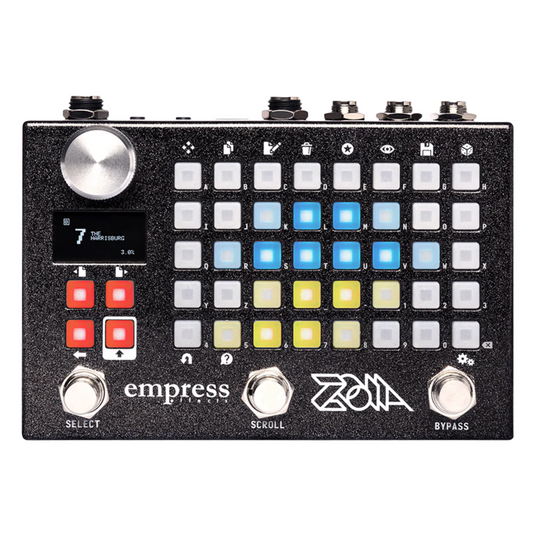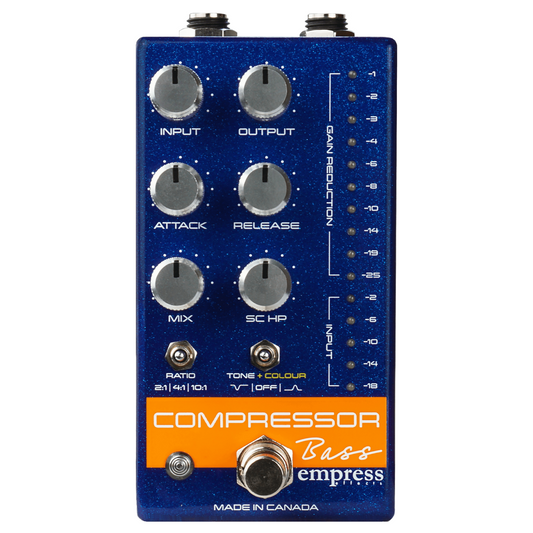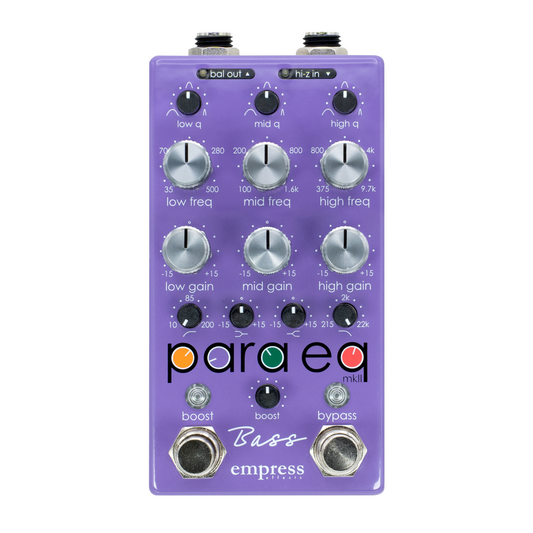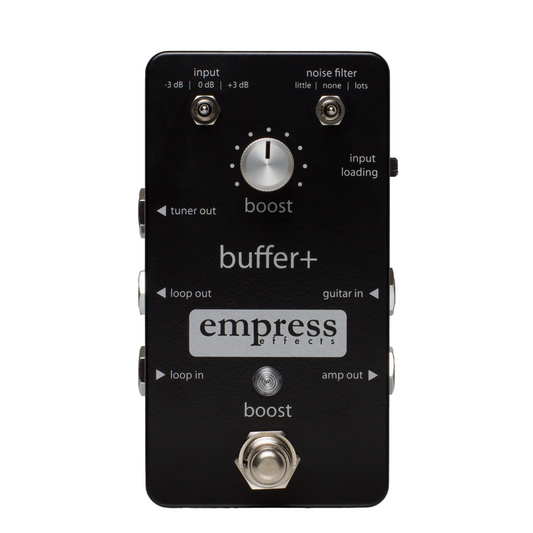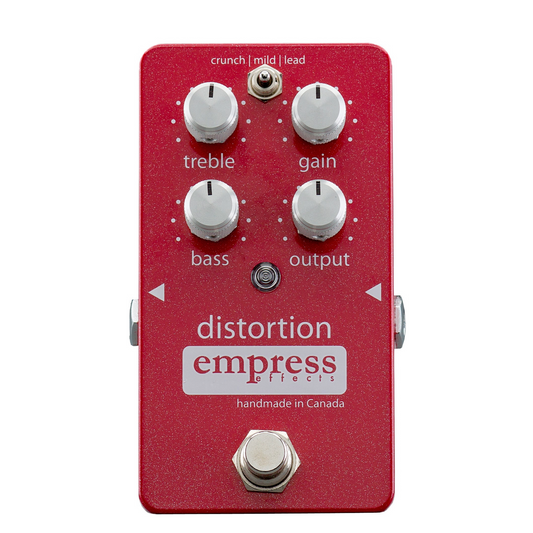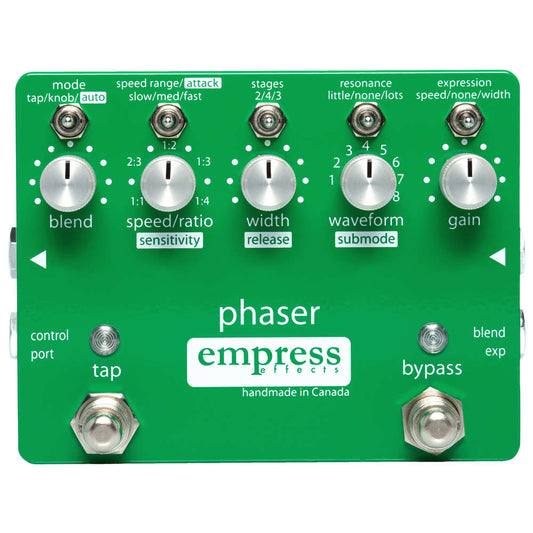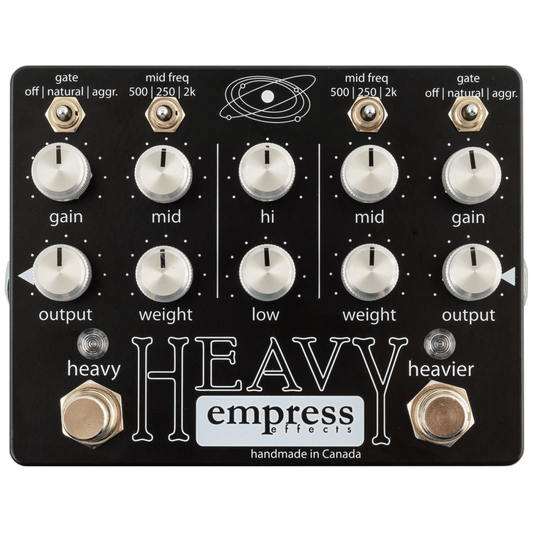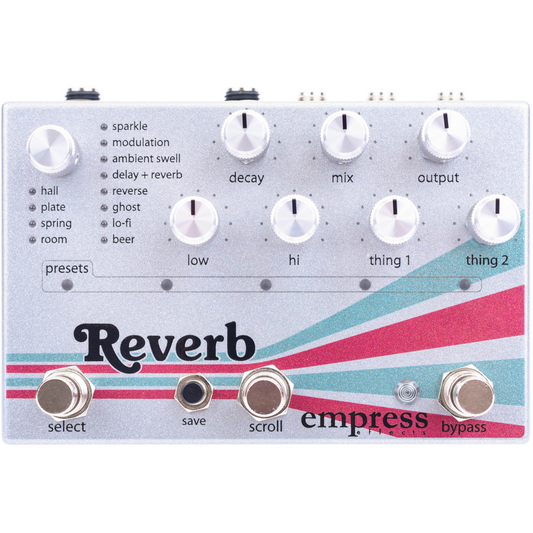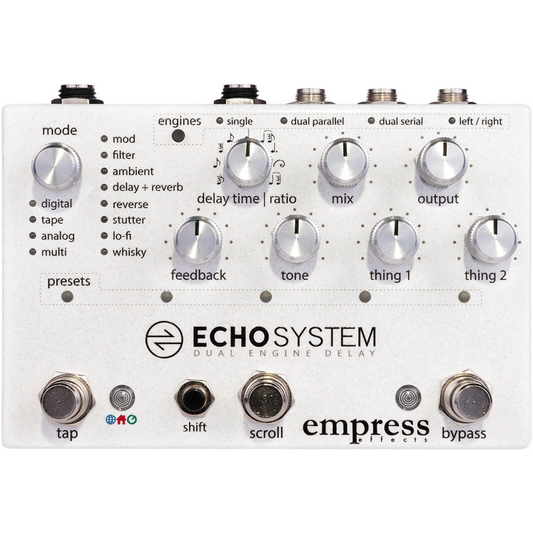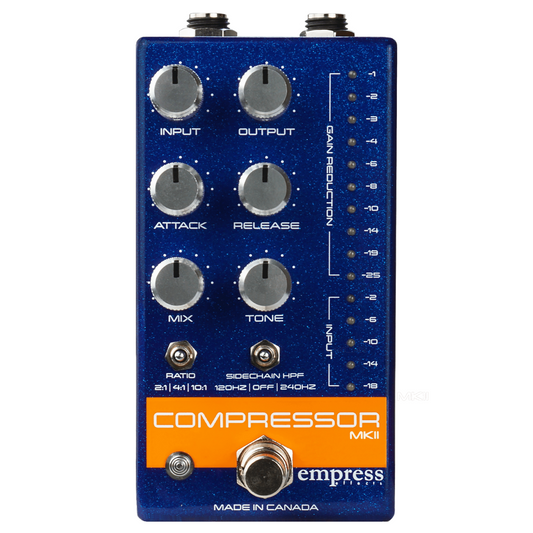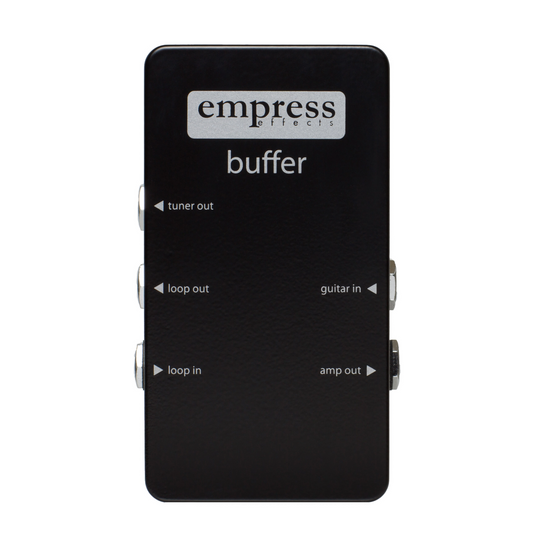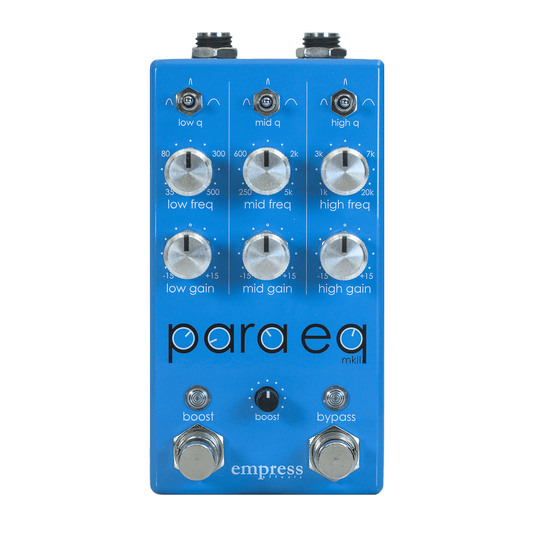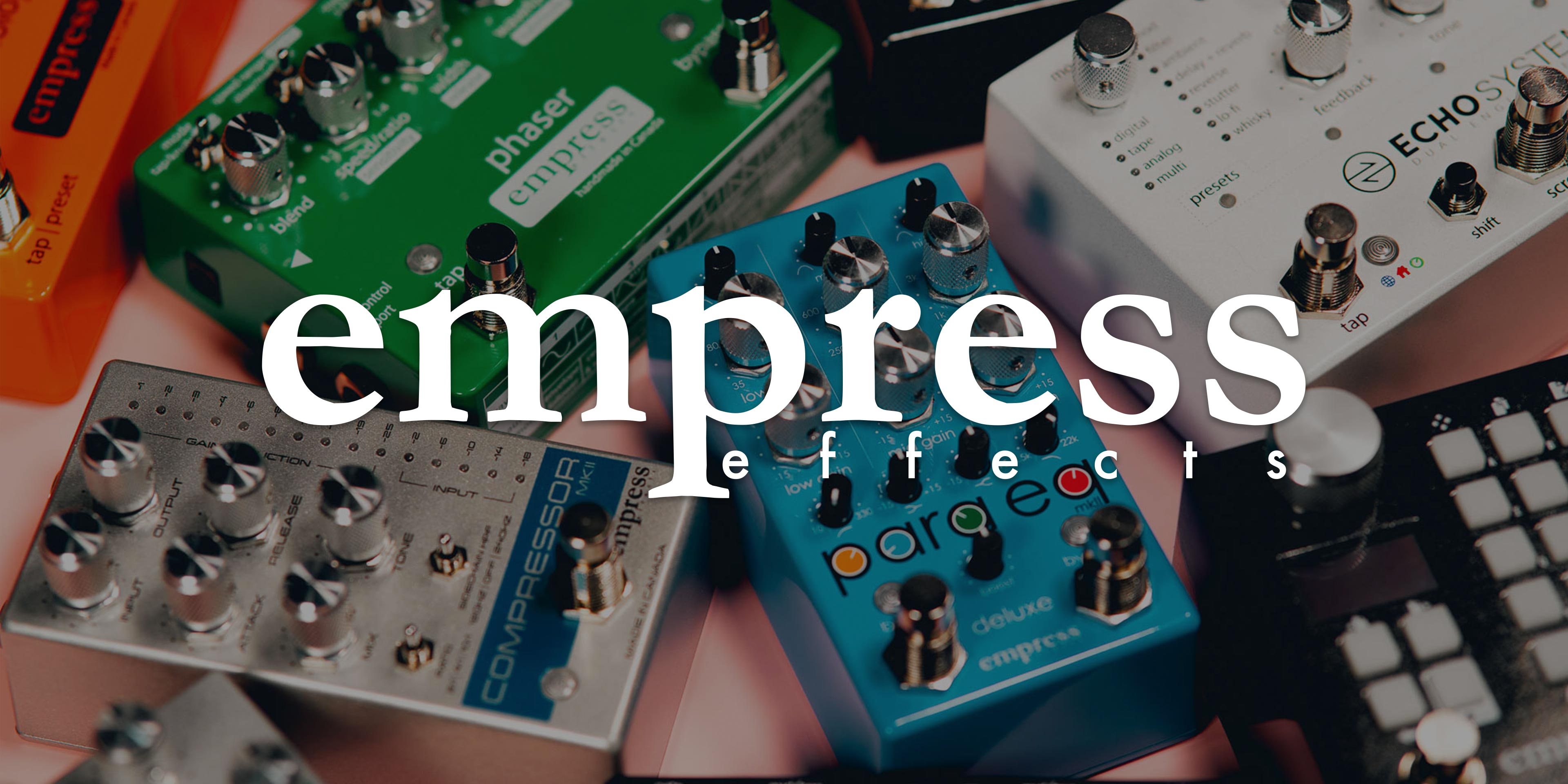
Collection: Empress Effects
-
Bass Compressor
Vendor:Empress5.0 / 5.0
(1) 1 total reviews
Regular price $274.00 USDRegular priceUnit price / per -
Bass ParaEq
Vendor:Empress5.0 / 5.0
(3) 3 total reviews
Regular price $374.00 USDRegular priceUnit price / per$0.00 USDSale price $374.00 USD -
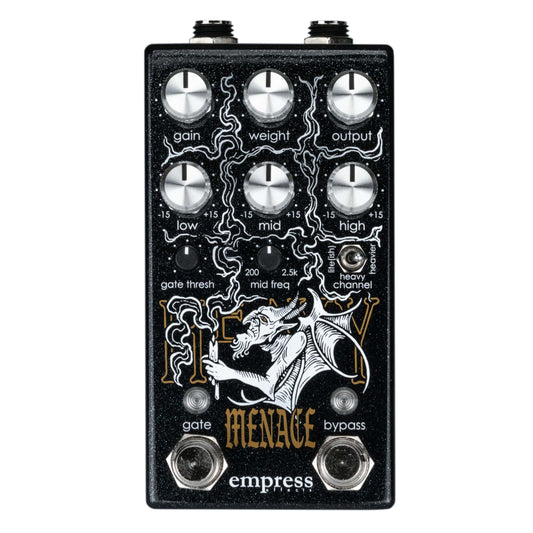 Out of Stock
Out of StockHeavy Menace
Vendor:Empress5.0 / 5.0
(2) 2 total reviews
Regular price $249.00 USDRegular priceUnit price / per -
Distortion
Vendor:EmpressRegular price $109.00 USDRegular priceUnit price / per -
Echo System
Vendor:EmpressRegular price $494.00 USDRegular priceUnit price / per -
Compressor Mk2
Vendor:Empress5.0 / 5.0
(2) 2 total reviews
Regular price $274.00 USDRegular priceUnit price / per -
Empress Buffer
Vendor:EmpressRegular price $109.00 USDRegular priceUnit price / per -
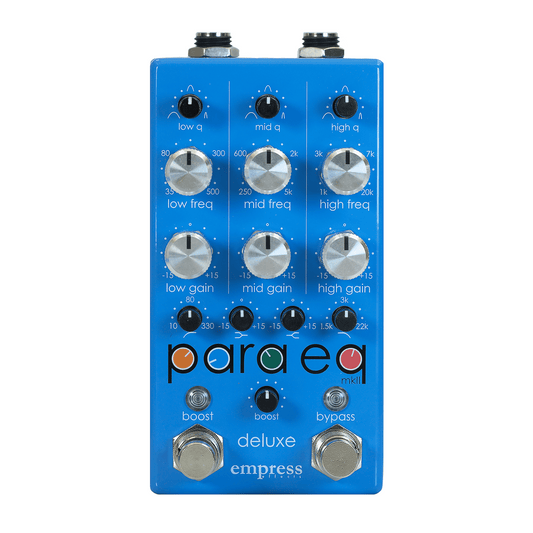 Out of Stock
Out of StockParaEq MK2 Deluxe
Vendor:EmpressRegular price $349.00 USDRegular priceUnit price / per -
ParaEq MK2
Vendor:EmpressRegular price $274.00 USDRegular priceUnit price / per
Empress Faq
What are the differences between the Bass Compressor and the Compressor Mark 2
The Empress Effects Compressor MKII has a tilt style Eq knob and a switch for setting the cutoff frequency of the Sidechain Highpass Filter (off, 120Hz, or 240Hz).
The Bass Compressor has a knob to set the cutoff frequency of the Sidechain Highpass Filter (20Hz - 400Hz) and a Tone + Color switch which adds mild harmonic distortion with a mid range cut or an upper mid range boost (sounds great on everything, including guitar).
How does the Heavy Menace compare to the Heavy?
Empress Effects Heavy Menace has A sweepable midrange while Heavy has a three position pole switch.
Heavy Menace has three modes while Heavy has two.
Although Heavy does have a noise gate, Heavy Menace has an advanced noise gate which can be used independently with footswitch.
Heavy is true bypass while Heavy Menace can be used in true bypass, yet also may be used in buffered bypass.
How many buffers are in my Buffer+ and Buffer?
Empress Effects standard Buffer (not Buffer+) is just a single input buffer. There is no buffer at the loop in. The loop in and amp out jacks are simply there for convenience of pedal board routing, and set up and tear down. It basically makes the buffer the central routing point of your pedal board.
In the Buffer+, we have a buffer at the loop input because it's essential to the extra functions of the Buffer+, such as the noise filter and output boost. Alternatively, you can also use the Buffer+ as a buffer for your effects in front of the amp, and as an fx loop buffer by sending the fx send from your amp to the loop in.
In other words:
Our Buffer has a buffer between the guitar input and loop out / tuner out
Our Buffer+ has a buffer between the guitar input and loop out / tuner out, and another buffering stage between the loop in and amp out
My expression pedal only controls the effect in the first 10% of travel. What's going on?
Expression pedals come in two pinouts. Some put the signal on the tip of the TRS cable (what the Superdelay expects), some put the signal on the ring. If it's on the ring, all the action will happen in the first 10% of the pedal's travel.
Can I use MIDI designer to control my MIDI enabled Empress Effects?
YES! One of our great customers (Todd Pennington) meticulously made a layout for all the Empress pedals.
What is the MIDI type used by Empress Effects?
All of our pedals that have MIDI use MIDI Type A (MIDI Standard). Same as Korg and Make Noise.
What expression pedals can I use?
The pinout for the expression pedal is TIP=signal, RING=3.3V power, SLEEVE=ground. So your expression pedal has to have that pinout.
About Empress Effects
Warranty
Products ordered through the Empress Effects website or through one of our authorized dealers come with a 2 year warranty against failures resulting from defective parts and/or faulty workmanship. This warranty can be extended to 4 years by filling out an online registration.
The warranty applies only to the original owner of the product. While a product is under warranty, Empress Effects will repair the product free of charge. However, the owner of the product will be responsible for both shipping to and from Empress Effects.
We reserve the right to cancel the warranty should the product be tampered with, modified, damaged through misuse, or damaged through failure to follow the operating instructions. Empress Effects liability is limited only to repair and replacement of a defective product.
Please contact Empress Effects before shipping a product to us.
About
What we're all about:
At Empress Effects, we strive to make original and exciting effects. Every effort is made to ensure the highest possible sound quality in every pedal. We aim to maximize the tonal possibilities with innovative features, yet remain focused on providing an intuitive user experience while keeping the footprint on the pedalboard minimal. Our goal is to inspire musicians, and give them the tools to create any sound they can dream of(and even some they can't).
History:
In 2005, having recently graduated from Queens University with a degree in electrical engineering, Steve was approached by a friend looking for a tremolo with a set of features that were unavailable on the market at the time. 7 Months later, Steve presented the tremolo to his friend. Turns out that his friend had already bought another tremolo and no longer needed it. Steve, now stuck with this new tremolo, went to sell it at a local used instruments store. The store liked it so much that they ordered 10. After speaking with a few other retailers, it was clear that there was a demand for these pedals. Thus Empress Effects was born.
On the tail of the Tremolos success, Steve got ambitious and began work on the Superdelay. The Superdelay took 2 years to design! During this period, Steve realized that, even if he worked 24 hours a day, he couldn't keep up with demand. And thus, the Empress family grew. Mike came on to take over assembly and Jay joined to help design pedals.
With this new team assembled, things ran much smoother and now, with 2 full time designers, new pedals came much quicker! In 2008, the ParaEq (the first pedal designed entirely by Jay) was released.

